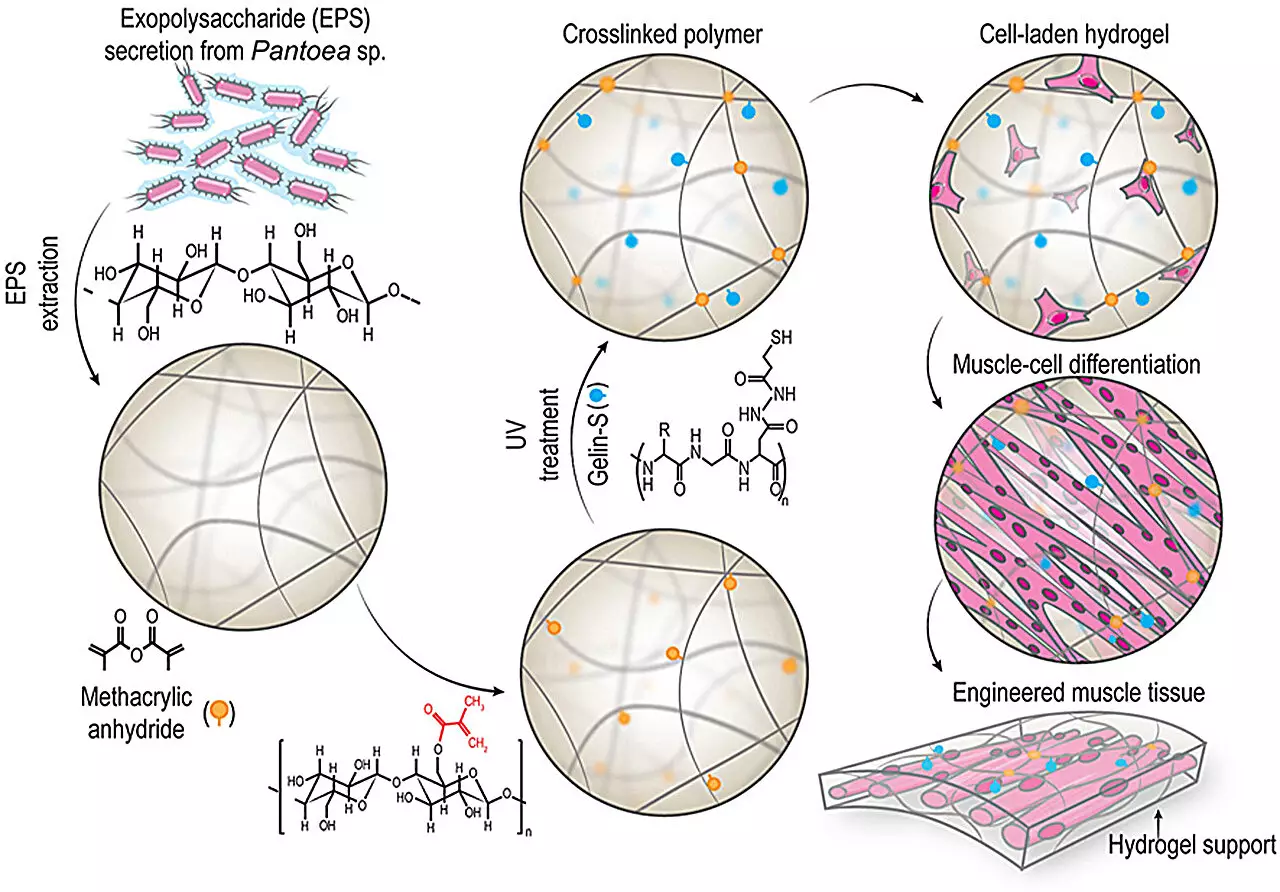Recent advancements in tissue engineering have opened new avenues for effective muscle recovery, spearheaded by a team at the Technical University of Denmark. Under the guidance of Alireza Dolatshahi-Pirouz, researchers have turned to the extraordinary capabilities of bacteria to generate a novel biopolymer with the potential to significantly enhance muscle regeneration. This groundbreaking study, published in the journal *Bioactive Materials*, unveils Pantoan Methacrylate (PAMA), a bacterial derivative that is set to reshape the landscape of regenerative medicine.
The inherent ability of certain bacteria to produce biomolecules has been cleverly repurposed to manufacture a unique hydrogel, known affectionately as “bactogel.” This resilient, elastic material shows remarkable promise for treating muscle injuries, demonstrated through rigorous in vivo testing on rat models. The research findings indicated not only a dramatic increase in muscle tissue formation but also a notable reduction in the formation of fibrous tissue, a common issue in muscle repair. The robust mechanical properties of PAMA bactogel, exhibiting nearly 100% recovery, position it as an invaluable asset in the realm of musculoskeletal rehabilitation.
Dolatshahi-Pirouz highlighted a critical gap in the current field of bioactive hydrogels: the lack of suitable mechanical properties to support the demands of muscular structures. Traditional hydrogels often fail to offer the necessary strength and elasticity. However, the PAMA bactogel stands out for its mechanical robustness alongside biocompatibility, paving the way for more effective treatment options. This dual capability speaks to its potential application in patient populations ranging from athletes and the elderly to military personnel experiencing traumatic muscle injuries.
Looking forward, the team anticipates a transformative shift where bacteria-derived polymers could redefine tissue repair methodologies. Dolatshahi-Pirouz envisions a future enriched with regenerative “bacto-baths,” where therapeutic biomolecules are secreted on-demand to foster healing in patients. This innovative approach could revolutionize how we perceive tissue regeneration, emphasizing efficiency and precision without the immediate need for cellular intervention.
Broader Implications and Future Research
The implications of this research extend beyond mere muscle recovery. The tactical integration of bacterial biopolymers into therapeutic regimens could spur a wave of groundbreaking developments in regenerative procedures. While the current study yielded promising results in a controlled setting, further investigation will be essential to fully understand the potential of PAMA and its applications in human medicine. The next steps will likely involve complex trials that assess the effectiveness of combining PAMA bactogel with muscle progenitor cells, further enhancing its efficiency in tissue healing.
The fusion of bacteriology and tissue engineering heralds a thrilling chapter in medical science; one that not only provides immediate solutions but also paves the way for revolutionary approaches to healing in the future. With continued research and development, we may soon witness the realization of Dolatshahi-Pirouz’s vision for a healthier, more resilient future.

